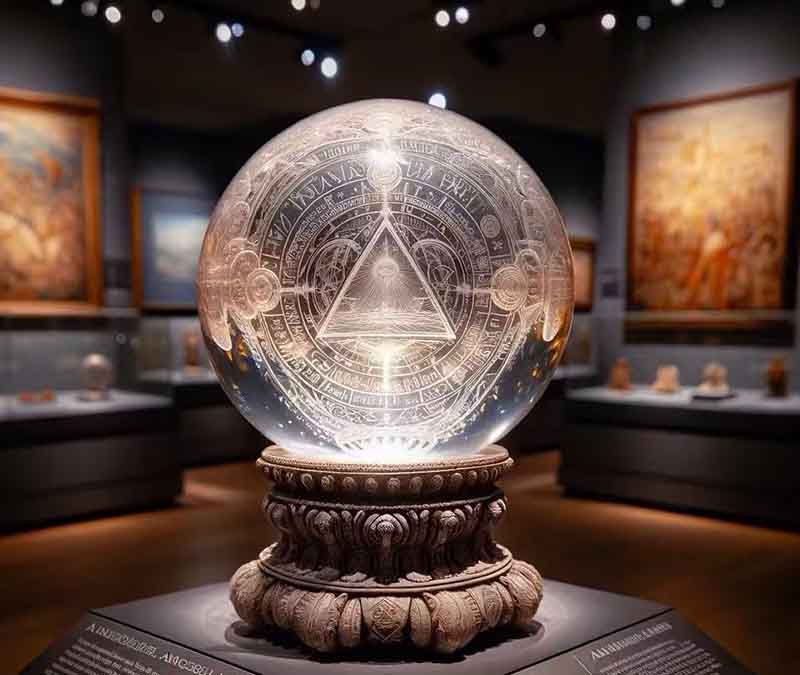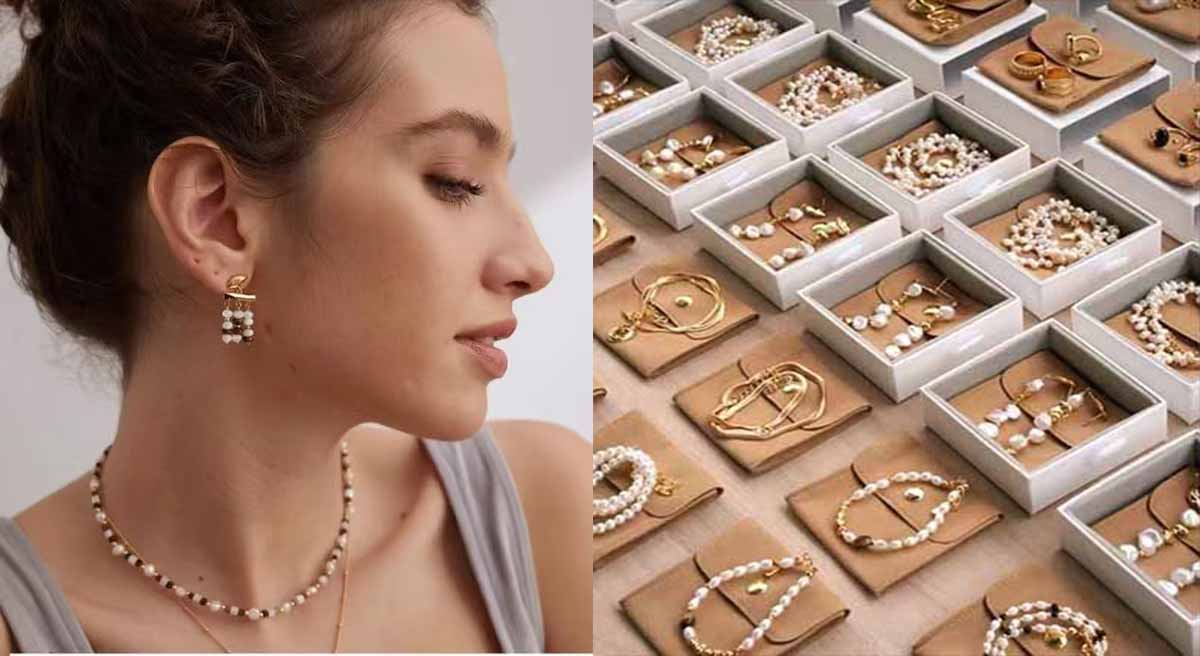
These stones were called “cornerstones” and a person was supposed to have 12 stones, one for each month.
Over time, it was believed that wearing a gemstone associated with the month of birth was beneficial.
The origin of birthstones

It was believed that wearing a gemstone associated with the month of birth would ward off evil spirits and bring good luck, and the birthstone was born.
As gemmology was not developed enough in the early days, people could not accurately distinguish gemstone varieties and often classified them according to their color.
For example, ruby, garnet, and red spinel would all be used as birthstones for the same month.
As science developed, more and more gemstone varieties were identified, and the list of birthstones changed as a result.
This, coupled with differences in beliefs and folklore from country to country and region to region, resulted in many different birthstones for the same month.
Standardization of birthstones

It wasn’t until 1912 that the National Association of Jewelers (now known as the Jewelers of America) met to standardize birthstones.
Name the gemstones associated with the 12 months as birthstones.
And this list of birthstones has actually been constantly tweaked and enriched.
It’s now December. Lucky for babies born in December, there are now four beautiful birthstones to choose from, each with its own charm.
Turquoise:
Since ancient times, turquoise, with its chic color, has been loved by people who believe it can bring health and good luck. In addition, it can ward off evil spirits. It has been worn and used for more than 5,000 years and is one of the oldest gemstones.


In Ancient Egypt over 3,000 years ago, turquoise was considered a symbol of power and status. It was worn as jewelry by pharaohs and other ancient Egyptian aristocrats to dress themselves.
From the 13th century, turquoise from ancient Persia was imported to Europe via Turkey.

At that time, it was believed to have the spiritual power to foretell disasters, and was very popular with royalty.
When it was set in a ring as a gift, the meaning was “forget-me-not”.
But due to less developed information at that time, the Europeans believed turquoise came from Turkey, so they called it “Turkish jade”. But Turkey does not produce turquoise.
In Tibet, turquoise is regarded as a national treasure. It is believed to bring health and good luck, and ward off evil spirits.
With its long history and unique beauty, turquoise is not only the birthstone for December, but also the commemorative stone for the 11th wedding anniversary. And often appears in the precious jewelry of the royal families of various countries.


Tanzanite:
Famous in the entertainment industry, Tanzanite was once thought to be the gemstone in the “Heart of the Ocean” in the movie “Titanic”. (In fact, the actual stone used in the movie was prop jewelry with blue synthetic cubic zirconia.)

Blue-violet crystals were discovered in Tanzania in the 1960s. There is very obvious polychromaticity, which shows blue, fuchsia, green-yellow, green and other colors in different directions.
At the time, no one could determine what this new crystal was, and for a time it was thought to be natural zircon.


After careful gemmological research, it was finally determined that this blue-violet transparent stone belonged to the mineral Zoisite. And it is only found worldwide in the Merelani Mountains of northern Tanzania.
Tiffany & Co. quickly recognized the potential of this beautiful stone and named it tanzanite after Tanzania, the country in which it is found. In 1968, Tiffany & Co. promoted it through a major publicity campaign.

Soon, the beautiful Tanzanite became a hit with the world’s top jewelry designers, gemstone dealers, celebrities, and jewelry collectors.
Tanzanite has become an instant hit in the gemstone world, appearing frequently in the fine jewelry of major brands.
Tanzanite’s beauty and rarity led to its inclusion in 2016 as one of the birthstones for December.
Not only that, but it was also chosen as an anniversary stone for the 24th wedding anniversary.
Though it has only been on the face of the earth for a few decades, tanzanite is now restricted from mining.


There are very few natural tanzanite on the market with a stunning blue or purple color. Basically, brown tanzanite is heated to give it a rich indigo or blue-violet color.
However, because of its large size and relatively affordable price, it is still a very suitable choice for many fans of large carats of blue gemstones.
Natural zircon (hyacinth):
When you see the name zircon, many people associate it with “zirconia” on cheap jewelry, “aureole” on nails, and “rhinestones” on clothes. In fact, the real identity of these so-called “zirconia” is synthetic cubic zirconia.


Synthetic cubic zirconia is an artificially manufactured synthetic gemstone known as cubic zirconia. It can’t even be called synthetic zircon because its physical and chemical composition has nothing to do with natural zircon.
To make it easier to market, some jewelers refer to it as “zircon”. Over time, consumers accept it by default. As a result, zirconia “stole” the name that originally belonged to natural zircon.
Origin of Zircon

In fact, zircon is one of the oldest natural minerals on earth. Zircon found in the Australian continent has a history of 4.4 billion years, in a variety of colors.
It has a hardness of 6 to 7.5 on the Mohs scale. It has a polished surface of diamond to glass luster, and transparent to translucent transparency.
As early as the 6th century, radiant zircon was likened to a symbol of prosperity and success and was used by the Greeks and Italians to make jewelry.
According to documents from the 11th century, Europeans believed zircon would protect the wearer from disease and injury, and from friendly treatment.
Travelers wear it as an amulet. By the Middle Ages, the stone was believed to promote good sleep, ward off evil spirits and increase wealth, honor and wisdom.
Zircon’s bright light and brilliant fire are similar to diamonds.


So much so that it was often confused with the diamond and used in many luxurious jewelry settings until the establishment of modern gemmology. This was when colorless zircon was cut and sold in France around 1500 as the “French diamond”.
Until 1900, natural brown zircon was a popular accent in Victorian jewelry. Orange or reddish brown zircons called hyacinths were the most common varieties.
Blue zircon

Around 1920, blue zircon appeared on the market and immediately became a popular gemstone.
It can often be seen on antique British jewelry from that period.
It is said that zircon was almost named “starlight” to illustrate the stone’s sparkling, fiery nature. However, the name was never adopted.
In 1952, the Jewelry Association of America listed zircon as one of the December birthstones, replacing the original lapis lazuli.
The above three gemstones are the most common versions of December’s birthstones. In addition, some organizations have included other gemstones as December’s birthstones.
Blue Topaz:

The International Gemmological Institute (IGI), for example, includes blue topaz in its modern December birthstone version.
Why “blue topaz?” Because natural topaz’s original color was varied, including clear, pale yellow, orange, pink, violet, brown and, rarely, red.
The ancient Greeks believed that topaz could give people strength.
In the 14th to 17th centuries, Europeans believed it could break magical spells and ward off anger.
For centuries, Indians believed wearing a topaz at the heart site prolonged life and ensured beauty and wisdom.
The blue topaz that you often see today is basically caused by colorless topaz that has been heated and irradiated. It is a beautiful gemstone born from modern technology.

Some astrologers believe that because the color of blue topaz resembles the cool serenity of the seasonal sky. It allows the wearer to ward off negativity and attract positive energy.
With the ability to calm the mind and inspire creativity, it is perfect for those born in December.
However, it is worth noting that irradiated blue topaz may appear to lighten in color when exposed to ultraviolet light. When wearing it, people should try not to expose it to strong light for too long.


Wearing a gemstone with a special meaning is a unique and interesting experience.
Due to this, birthstones are commonly chosen as gifts for lovers, children, friends, and relatives that are chic and will not offend anyone.
For something even more unique and impressive, there is the option of customizing it to make it a one-of-a-kind piece of jewelry. Make this exclusive more personalized and private.


Of course, birthstones as a beautiful choice can be used either as a daily must-wear lucky gemstone or as a member of your jewelry box, taking turns with other gemstones to make up your glamorous charm.








